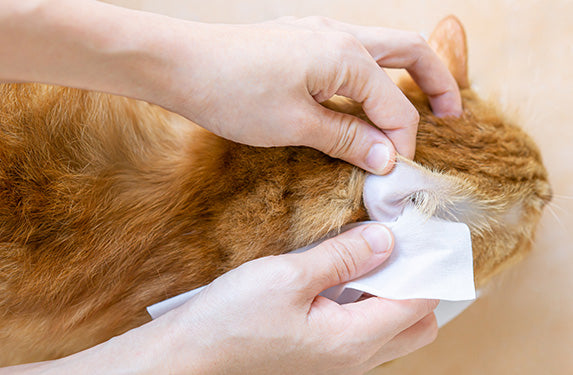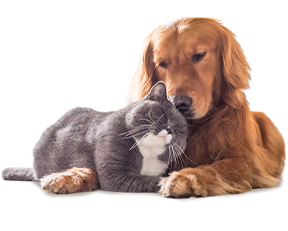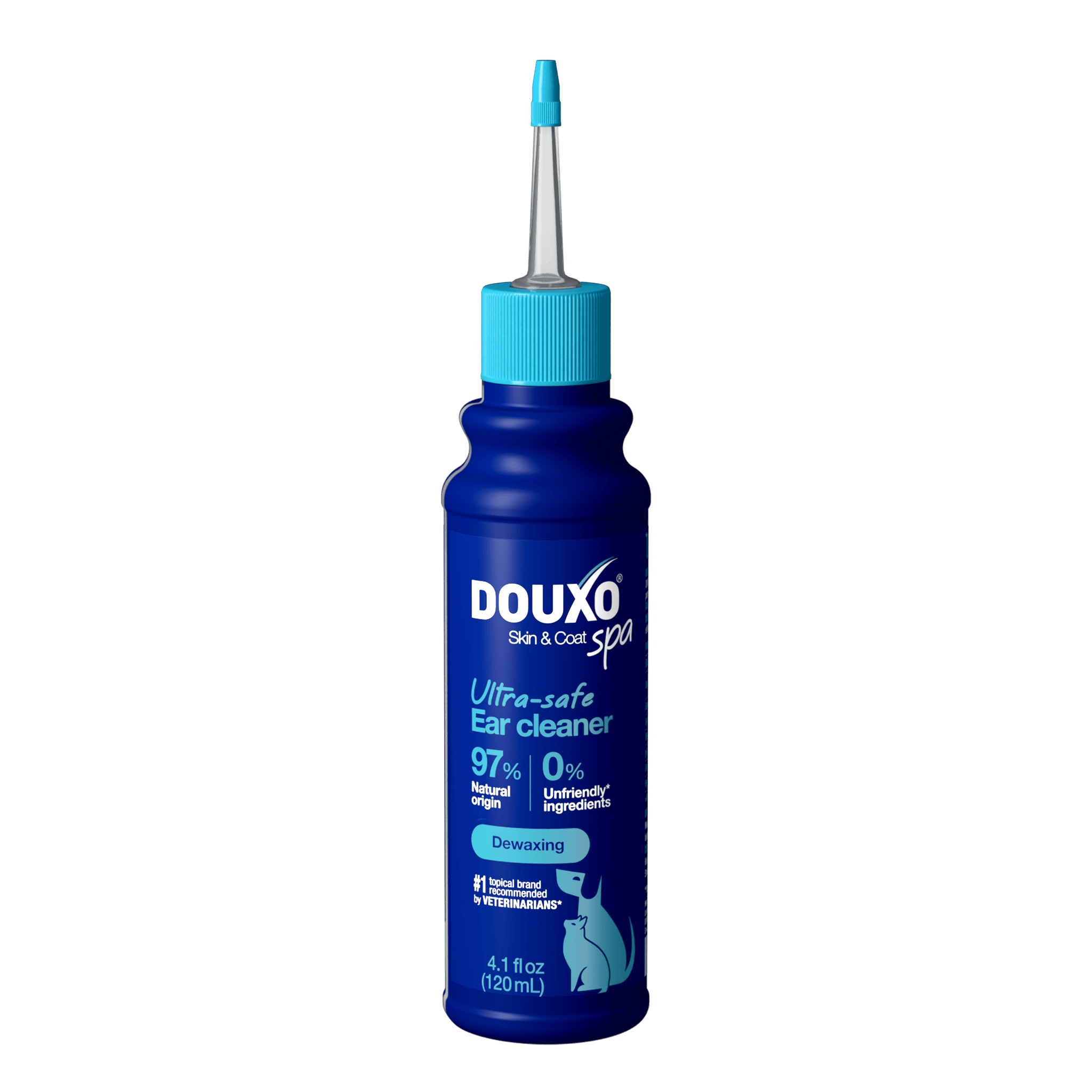3 key points on ear cleaning for cats
When
Clean your cat’s ears if they are waxy or dirty, or if your vet has recommended it.
Clean your cat’s ears if they are waxy or dirty, or if your vet has recommended it.
How to clean
Comfortably hold your cat facing away, and offer them a treat. Gently hold the ear ...
Comfortably hold your cat facing away, and offer them a treat. Gently hold the ear flap, apply cleaner, and massage below the ear. Then, allow them to shake their head. Use a cotton ball to gently wipe away debris.
What to use
Consult your veterinarian on the right ear-cleaning solution to use for your pet.
Consult your veterinarian on the right ear-cleaning solution to use for your pet.
As a pet owner, you’ll want to know how and when to clean your cat’s ears, as well as what to use during cleaning. This comprehensive guide covers what you need to know.
Recommended products
All about cats’ ears
Cat ear anatomy
What we call “the ear” is actually a whole host of delicate structures working together, with only some of these parts visible from the outside. So, what parts make up the ear as a whole?
The pinna – this is the upright, triangular ear flap, made up of cartilage covered by very delicate skin.
The pinna – this is the upright, triangular ear flap, made up of cartilage covered by very delicate skin.
The ear canal – this is the open part of the ear that runs down
toward the eardrum. It is shaped like the letter L, but only the
vertical canal can be seen from the outside. The horizontal part, and
the eardrum, can only be examined using a tool called an “otoscope,” by
your vet.
The ear canal – this is the open part of the ear that runs down
toward the eardrum. It is shaped like the letter L, but only the
vertical canal can be seen from the outside. The horizontal part, and
the eardrum, can only be examined using a tool called an “otoscope,” by
your vet.
The tympanic membrane – this is the eardrum, a thin membrane which
separates the outer structures of the ear from the middle and inner
parts.
The tympanic membrane – this is the eardrum, a thin membrane which
separates the outer structures of the ear from the middle and inner
parts.
The middle ear – delicate auditory ossicles — essential for hearing — are located here.
The middle ear – delicate auditory ossicles — essential for hearing — are located here.
The inner ear– deep within the ear, the inner ear hosts part of the
vestibular system (involved in balance), and the cochlea (the hearing
organ).
The inner ear– deep within the ear, the inner ear hosts part of the
vestibular system (involved in balance), and the cochlea (the hearing
organ).
Why is it important to know about your cat’s ear anatomy?
Understanding the complicated anatomy of a cat’s ear helps us understand why ear infections are rarely simple and what symptoms suggest there is an ear issue. If your cat shows incoordination or a lack of balance, or if their head is tilted to the side, this can indicate that the middle and inner ear are affected.
Looking at the outside of the ear isn’t sufficient to know what is going on inside. Understanding the root issue helps us know what parts of the ear can be cleaned.
Waxy discharge can build up in the ear canal and onto the pinna. This can be carefully cleaned, if advised, to keep the ear canal open and clean. Bacteria thrive in moist, dirty, dark and low-oxygen conditions, so keeping the ear canal clear can reduce the likelihood of infection. The eardrum separates the canal from the middle and inner ears, which never require cleaning, so cleaning should not be attempted if there is any suspicion that the eardrum is ruptured.
When cleaning cats’ ears, you should never insert cotton swabs into the ear canal, as it can push earwax and other debris further down the ear, which can lead to damage to the eardrum. As a rule, it’s a good idea to get your cat used to having their ears handled and examined regularly at home. You’ll become familiar with what’s normal and can identify problems more quickly.
When should you clean your cat’s ears?
Many cats do not require routine ear cleaning. Most cats’ ears will produce normal amounts of wax and self-regulate to maintain excellent hygiene. However, some cats will need ear cleaning, particularly if they are prone to waxy or yellowish discharge in their ears. The most common causes of ear discharge include:
Ear mite infestations
Ear mite infestations
Ear infections (otitis)
Ear infections (otitis)
Masses growing in the ears (most often polyps)
Masses growing in the ears (most often polyps)
Foreign bodies in the ear canal
Foreign bodies in the ear canal
In any case, if you notice a waxy discharge in your cat’s ear, you should seek medical attention for your cat, as it likely needs treatment beyond ear cleaning.
If you notice your cat seems off balance or wobbly, has their head tilted to one side or seems to be walking in circles, don’t clean their ears. Instead, contact your veterinarian; your cat may have a problem with their middle ear.
How to clean your cat’s ears
Depending on your cat’s temperament, you might be viewing the task of ear cleaning with some apprehension. Getting your cat used to having their ears handled can be hugely beneficial if you are going to be cleaning them. Using treats to make it a positive experience for your cat can be really helpful to get them accustomed to these kinds of procedures.
Here is a step-by-step guide to cleaning cat ears:

1. Have everything ready before you start: ear cleaner, cotton balls, cat treats and gloves (if you want to wear them)
2. Restrain your cat appropriately. It can be helpful to have them up on a table so that you can hold them against you comfortably. Hold them facing away from you, with their body tucked into yours to keep them still. Feed them a treat, if they will take it.
3. Use one hand to gently hold the ear flap so that you can see the entry to the ear canal.
4. Give the cleaning fluid a shake. Position the spout of the cleaner at the top of the entry to the canal, and squeeze firmly. Your cat might react to this, but try and keep them still. To ensure the cleaner stays where it needs to be, don’t allow them to shake their head.
5. Gently massage just below the ear to encourage the cleaner to spread throughout the ear canal and down toward the eardrum.
6. Now let them shake their head.
7. Use a cotton ball to gently wipe away any wax, debris and cleaner from the inside of the ear flap and the top of the canal. Never insert anything down into the canal (including cotton swabs), as that will just push debris down further into the canal.
8. Give your cat another treat. Ear cleaning is not a pleasant experience, but with time and patience (and some tasty treats!), it can become very well-tolerated.
What can you use to clean your cat’s ears?
You should speak with your veterinarian for recommendations on ear-cleaning products that are appropriate for your cat. Avoid homemade ear-cleaning products, as they are often ineffective and can even be irritating to your cat.
A good cleaning agent should be gentle to not irritate the skin, but also effective in removing excess earwax and debris. Your vet may recommend a solution with a moisturizing action to help maintain the ear canal’s natural skin barrier as well.
Pets prone to otitis often require a product that soothes the ear canal. Ophytrium®, which is present in DOUXO® Skin & Coat SPA Ear Cleaner, helps soothe the ear, improve hydration and prevent the adhesion of pathogens that favor otitis. When recommended by your vet, this product can be easily used as a long-term solution as well.
In any situation, choose a solution with a gentle tip to make care more comfortable for your feline friend.
Ear hygiene plays a crucial role in preventing earwax buildup and infections. Talk to your vet to learn about the ear-cleaning frequency, methods, and products that make sense for your cat. Following the right steps for ear cleaning help keep your cat healthy and make the caring experience a happy one for both you and your pet.











